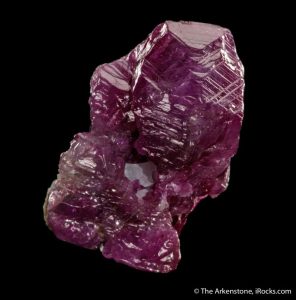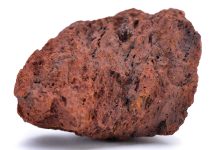
Ruby gemstones (a variety of corundum (Al2 O3)), owe their striking red coloration to trace amounts of chromium within their crystal structure. While red is prized in a ruby gemstone, ruby hues can also be orange and purple. The strength of ruby’s red color depends on how much chromium is present — the more chromium the deeper the color. Their hardness, ranking 9 on the Mohs scale of hardness, makes them exceptionally durable and suitable for various applications, especially as jewelry.

Where Rubies Are Found
Primary sources of ruby gemstones include Myanmar (Burma), Thailand, Sri Lanka, Madagascar and Tanzania. The Mogok Valley in Myanmar is often referred to as the “Valley of Rubies” and has been a prolific source of high-quality rubies for centuries. These Burmese rubies are prized for their intense red color and exceptional clarity and are commonly referred to as “pigeon’s blood.” These rubies have adorned the crowns and jewelry of royalty and dignitaries all over the world.
How Rubies Are Formed
Rubies primarily form through high-grade metamorphism and as such are most often found in the metamorphic rocks marble, amphibolite and schist. Rubies, such as the ones from Tanzania, form in association with bright green zoisite and black amphiboles and are often used as a decorative stone called “anyolite.” Other minerals found with rubies include garnet, mica (biotite), spinel and sapphire.

Arkenstone photo, irocks.com
Ruby Gemstone Uses
Rubies are prized for jewelry making because of their hardness and resistance to scratching especially in rings, necklaces and earrings. In technology and industry, rubies are used as bearings in precision instruments like watches and compasses. Their thermal and electrical conductivity properties make them valuable components in electronics and laser technologies.
Vital Ruby Gemstone
Some cultures believe rubies can enhance vitality, courage, and passion, or provide protection against negative energies. Ruby is the birthstone for July.

Arkenstone photo, irocks.com
Historically Significant Rubies
Throughout history, certain rubies have garnered attention because of their size, color, and the stories surrounding them. Here are three famed rubies.
- The “Black Prince’s Ruby,” which is not a ruby but a large spinel, weighs about 170 carats and adorns the Imperial State Crown of England. Its story dates back to the 14th Century.
- The “Timur Ruby,” a large spinel of about 352 carats, is inscribed with the names of some of its previous owners, including the 14th-century Central Asian conqueror Timur. It’s believed to have been looted from the treasury of the Mughal Emperor Aurangzeb. It is in the collection of the British Royal Family and housed in the Tower of London.
- The “Rosser Reeves Ruby” is a star ruby weighing 138.7 carats and is renowned for its exceptional asterism and is considered one of the finest examples of star rubies in the world.
This story about ruby gemstones previously appeared in Rock & Gem magazine. Click here to subscribe. Story by Dr. Stuart Mills and Pam Freeman.















